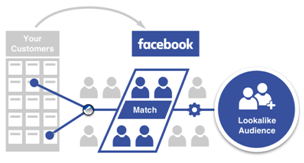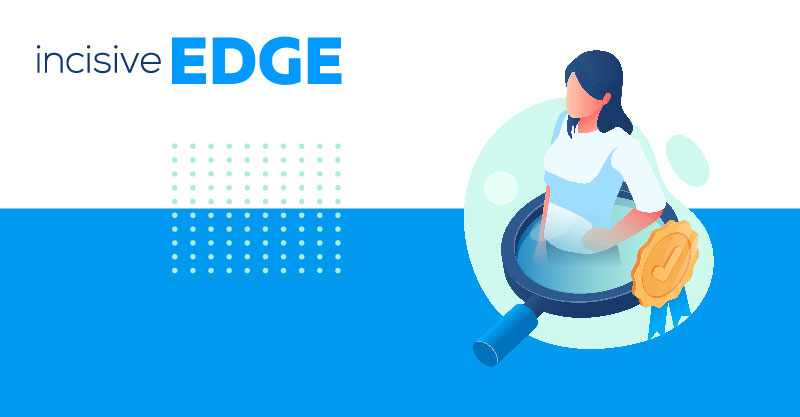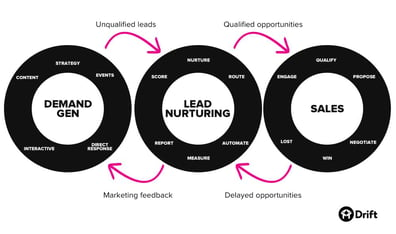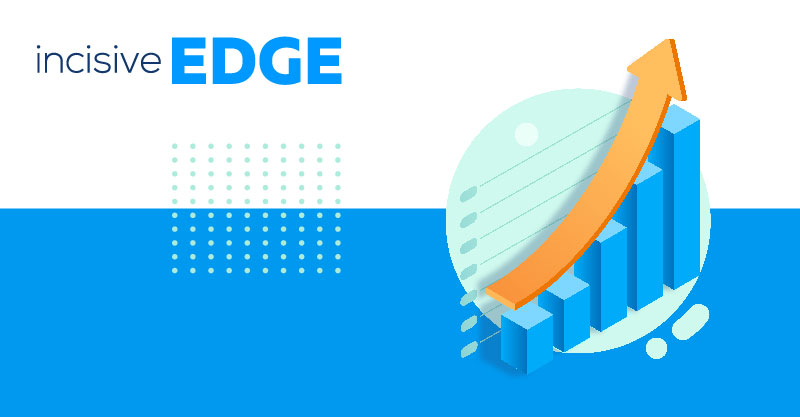Demand generation marketing has become increasingly important across all industries and the web, you'll see many touting the benefits of their B2B demand generation campaigns.
Most will claim that they have seen greater success than traditional marketing methods. Creating demand for your product or service will change the trajectory of any company.
So, what is B2B demand generation, and how does it differ from similar marketing strategies? What tools do you need for it, and how do you get started?
B2B demand generation in b2b is, in a nutshell, a form of marketing that creates interest in a product or service. Instead of solely relying on marketing and sales teams to get clients, you create interest by providing an answer to a problem a business might be facing. A tool or offering that overcomes the pain points they experience.
Examples could include:
- A legal firm that deals exclusively with mergers between tech companies.
- Their target? Tech companies preparing to merge.
- A tech company that offers a file management solution for legal firms.
- Their target? Legal firms using legacy filing systems.
- A tech company that provides software to help facilitate the merging of legal firms and tech companies.
- Their target? Tech companies and legal firms that are merging.
Of course, it's not only tech companies and legal firms that can make use of B2B demand generation. Any business that provides a product or service that would benefit another business should be thinking about different ways and a solid demand gen strategy to create demand.
However, rather than simply shout from the rooftops and see who bites, this approach is more tactical and based around the people most likely to become solid leads.
It could begin with the question “What type of company needs our product?” and be followed up with “Why would this company want what we're selling?”.
By answering both questions, you begin to get a clear idea of the businesses you are targeting, in a similar vein to account-based marketing.
From there, just like account based-marketing, demand generation becomes a multi-phased relationship with many stages (some that intersect other marketing functions) from initial brand awareness through reinforcement and on to generating qualified leads.
The overall process should look something like this:
- Identification of target audiences (the people you can solve a problem for)
- Brand awareness (showing the right people how you can solve their problem)
- Reinforcement (gentle reminders and more information that further convince audiences you are the right company to solve their problem)
- Conversion (the traditional sales process uses these nurtured leads to seal the deal and you begin solving the problem for people)
While the example above is highly simplified, demand gen strategies operates in a comparable way to traditional marketing funnels.
The goal is to gently nurture potentially receptive leads, guiding them through said funnel and qualifying them in and out as you go before handing incredibly hot leads to the sales team to convert. It's for this reason that demand generation requires close ties between marketing and sales to be effective.
What’s the difference between demand generation and lead generation?
There are several similarities between the two and account based marketing, but they are quite different beasts.
Where demand generation gets people interested in a product or service, lead generation is the stage where that interest becomes a lead, normally a person's name, email address and other contact information.
· Check this out to learn more about b2b marketing
Lead generation is technically a part of demand generation (the stage after demand has been generated), but different techniques are required for both.
It's possible to run demand generation and lead generation campaigns independently but the two working together will deliver the best results.
It's a fine balance.
Lead generation will normally use gated content or other methods that require information to be shared by a prospect before the material can be accessed. Demand generation is more focused on making sure the right people see the right content for them, which means gating isn't the best approach.
That's where the funnel we mentioned before is important. It allows for demand generation to do its work before the lead generation kicks in to capture those who have been pre-nurtured and are already interested.
How do B2B demand generation campaigns differ from B2C campaigns?
Consumers can and often do make buying decisions at the drop of a hat. At worst it's two decision-makers, such as a husband and wife.
Businesses are more likely to purchase by committee. For that reason, B2B demand generation campaigns, as with most B2B marketing, takes longer and often needs to cover more topics or provide a range of details to convince the multiple parties, or Decision-Making Unit involved in buying a product or service.
This is worth thinking about as you plan your campaigns, looking beyond the business itself and into finer detail, such as who the key stakeholders are, what their roles entail and what messages will resonate with them.
What tools do you need for B2B demand generation?
As with most marketing campaigns, solid data is your friend when it comes to B2B demand generation.
Not only will it help you to pinpoint the ideal companies to which you should target your campaigns, but also identify personas within those businesses.
This information can then be multiplied using widely available tools, such as Facebook's Lookalike Audiences, to develop a solid foundation for your marketing efforts from an initially small sample.

Image source
The above goes hand in hand with solid technology. Whether it's extracting data from a BI platform or automating your posts and ads, a CRM and CMS will be essential.
Also crucial for these platforms will be visibility and collaboration between sales and marketing teams, as mentioned above.
Your B2B Demand Generation Strategy
What actions should you take first and why?
So, now you know what B2B demand generation is and what it isn't, plus the types of tools you'll need. How do you go about doing it?
Entire books can and have been written on the topic but, to get you started, here are some key tactics you can employ to begin generating B2B demand.
1. Create amazing, relevant content
The most important part of a demand generation campaign is the content you use, with 85% of B2B marketers surveyed by the Content Marketing Institute believing high-quality content creation was a key factor in their overall success.
This could be thought leadership material, white papers, eBooks or videos.
Make it useful, make it compelling and make it free, and it will make people truly believe they need your product or service.
2. Know your audience
As discussed above, you can't answer a problem for people if you don't know what problems they have. This is where data and detailed research can help you build the Ideal Client Profile and buyer personas which will, in turn, inform the content of your campaigns and help tailor messages to different segments of your audiences.
3. Know when to stop
The various methods you use to feed information to your target audiences have a limit. Consider how much information is required for each persona and switch to lead generation when they have all the information they need.
4. Match channels with targets
If your data and research are on point, you'll know where to find your targets, be it online or in their office.
It's also important to think about the medium of your message at each stage of your campaign. It could start with online ads or sponsored posts to get your name out there and move into thought leadership on your blog or that of other, well-chosen businesses.
Senior leaders could become more active on social media to further enhance credibility, and free resources could be made available that provide answers and assistance to your targets while further enhancing the perceived value of your brand.
5. Keep it personal even if you're speaking to thousands
Relationship building is a core facet of demand generation, helping to introduce and reinforce the credibility of your brand.
Broad brush strokes in email marketing and in posts won't cut it here. You need to be speaking directly to the people you're targeting, understanding their needs, and showing them how their unique problems can be solved.
That's why, according to HubSpot message personalisation is the number one tactic used by email marketers to increase engagement rates.
Over to you
What is B2B demand generation? It's certainly an aspect of your marketing you can't complete with the click of a button. It requires detailed planning, talented resource, quality content and ongoing testing, all of which Incisive Edge offers to businesses on a daily basis.
If B2B demand generation is a problem your business needs solving, why not get in touch or book a free strategic consultation today and one of our marketing team members will get in touch!










